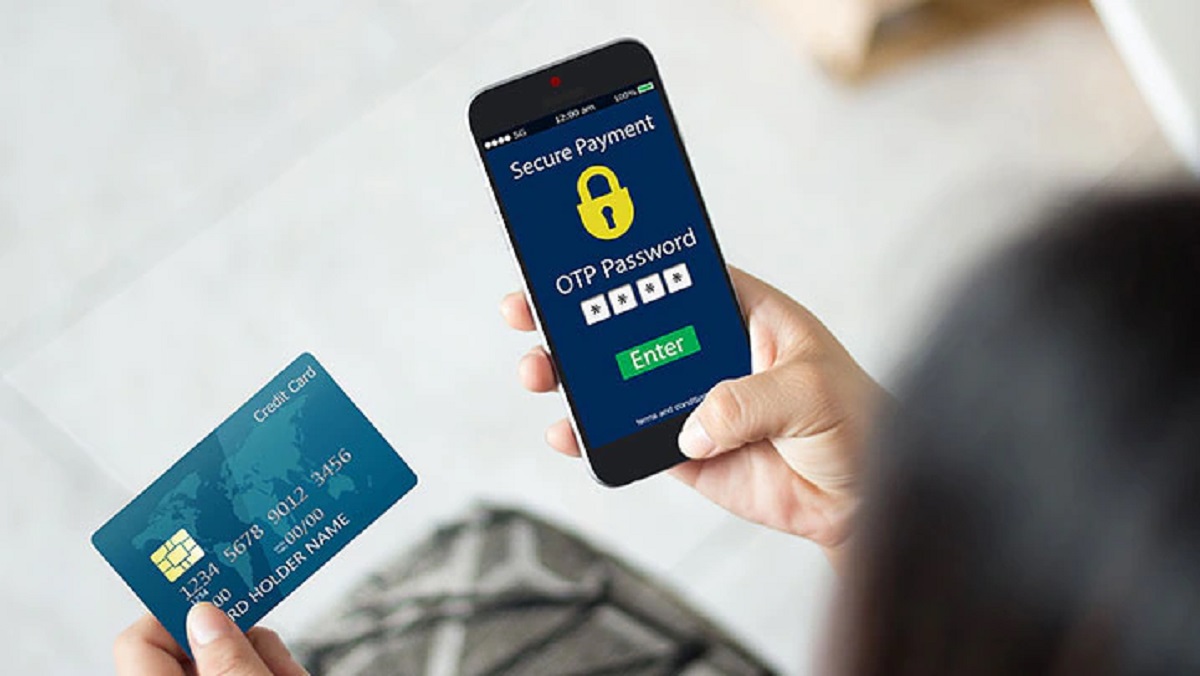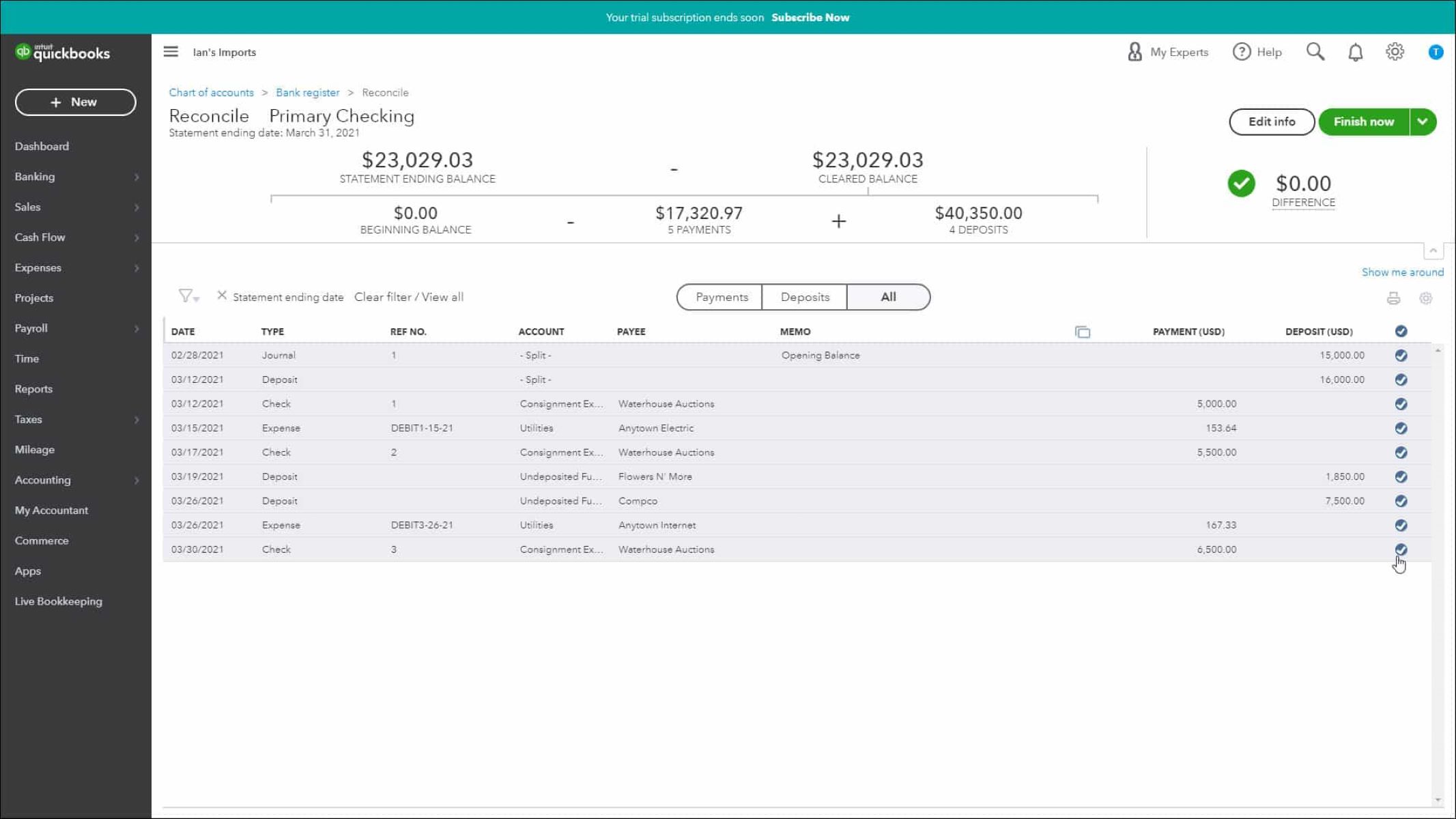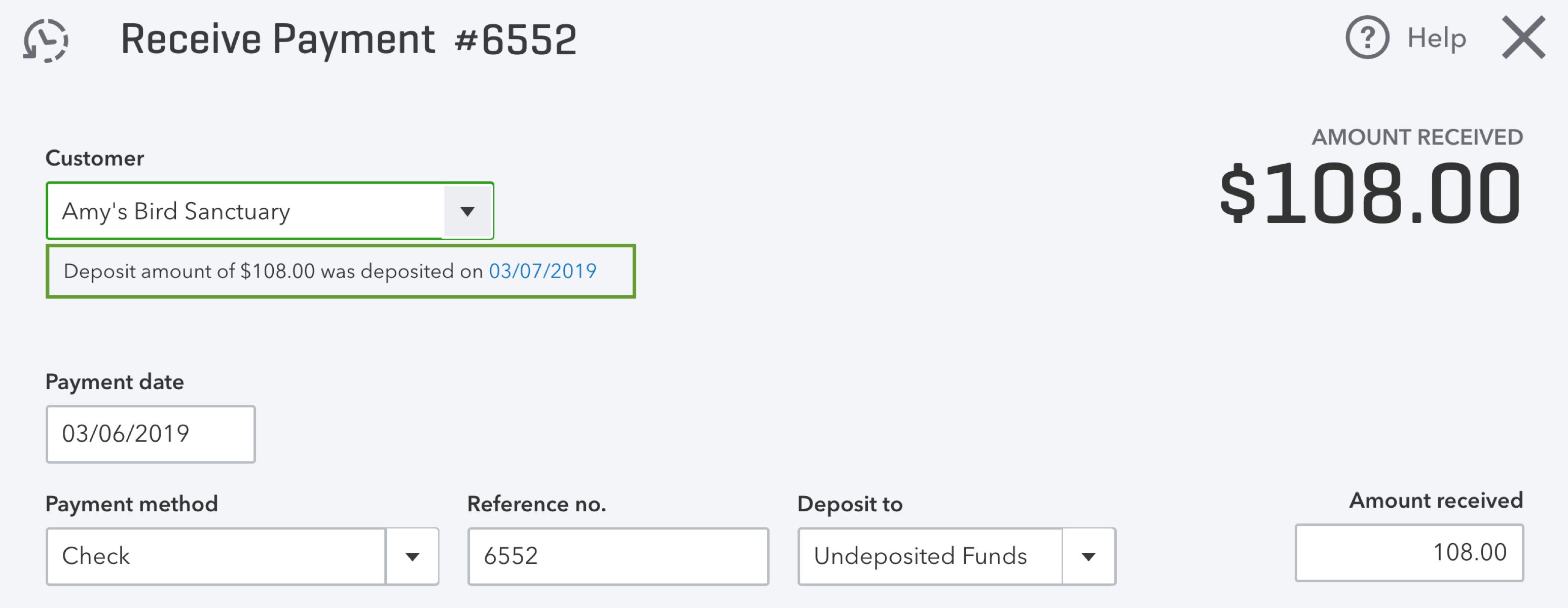Introduction
Welcome to the world of online banking! In this technologically advanced era, managing your finances has never been easier or more convenient. Online banking allows you to access and control your accounts from the comfort of your home or on-the-go using a computer, tablet, or smartphone. Whether you’re new to online banking or looking for some tips to make the most of your experience, you’ve come to the right place.
In this guide, we will walk you through the process of setting up and using online banking. We’ll cover everything from choosing a reputable online banking provider to navigating your account dashboard and completing common tasks such as transferring funds and paying bills. By the end of this guide, you’ll feel confident in managing your finances with ease and security.
Gone are the days of standing in long queues at the bank or rushing to make it before closing time. With online banking, you have 24/7 access to your accounts, allowing you to check balances, review transactions, and manage your money anytime, anywhere. This flexibility is especially beneficial for those with busy schedules or frequent travelers who need real-time access to their finances.
One of the key advantages of online banking is the ability to save time. Instead of manually writing checks or visiting the bank to make deposits or payments, online banking streamlines these processes. With just a few clicks, you can initiate transfers, pay bills, and even set up automatic recurring payments, freeing up your valuable time for other activities.
Security is a top priority in online banking. Reputable online banking providers employ advanced encryption technologies to safeguard your personal and financial information. Additionally, they implement multi-factor authentication, ensuring that only authorized individuals can access your accounts. By following best practices for online security and staying vigilant, you can confidently enjoy the benefits of online banking while keeping your accounts safe.
In the following sections, we will provide a step-by-step guide to help you set up and use online banking effectively. From creating an account to understanding your account dashboard, making deposits, transferring funds, paying bills, and exploring additional features, we have you covered. We will also address frequently asked questions and provide tips for ensuring online security.
Are you ready to take control of your finances and simplify your banking experience? Let’s dive into the world of online banking and discover the possibilities that await you.
Setting up Online Banking
Before you can start enjoying the convenience of online banking, you’ll need to set up an account with an online banking provider. Follow these steps to get started:
1. Research and Choose a Provider: Begin by researching different online banking providers to find one that meets your needs. Consider factors such as user-friendly interfaces, fees, customer support, and security measures.
2. Visit the Provider’s Website: Once you’ve decided on a provider, visit their website to begin the account setup process. Look for a “Sign Up” or “Open an Account” button to get started.
3. Gather Required Information: Before you start filling out the application, make sure you have all the necessary information handy. This may include your full name, address, contact details, social security number, and employment information.
4. Fill Out the Application: Follow the instructions provided by the online banking provider to complete the application. Be careful to enter your personal information accurately to avoid any potential issues later on.
5. Verification Process: Some online banking providers may require additional verification steps to confirm your identity. This could involve providing a copy of your ID or answering security questions.
6. Accept the Terms and Conditions: Before finalizing your account setup, read and accept the terms and conditions provided by the online banking provider. It’s important to understand the rules and guidelines of using their services.
7. Create a Secure Login: Once your account setup is complete, you’ll need to create a unique and strong login ID and password. Make sure to choose a password that includes a combination of letters, numbers, and special characters to enhance security.
8. Set up Security Measures: Many online banking platforms offer additional security measures such as two-factor authentication or biometric authentication. Enable these features to add an extra layer of protection to your account.
9. Link Your Accounts: If you have multiple bank accounts or credit cards, you may have the option to link them within your online banking account. This allows you to conveniently manage all your accounts from one place.
10. Familiarize Yourself with Features: Take some time to explore the features and functionalities of your online banking account. This will help you make the most of the platform’s capabilities.
Setting up online banking may vary slightly depending on the provider you choose, but these general steps should guide you through the process. Once your account is set up, you’ll be ready to take advantage of the many benefits that online banking offers.
Choosing an Online Banking Provider
Selecting the right online banking provider is crucial for a seamless and secure banking experience. Here are some factors to consider when choosing an online banking provider:
1. Reputation and Trustworthiness: Research the reputation and track record of the online banking provider. Look for reviews and ratings from other customers to gauge their reliability and customer satisfaction levels.
2. User-Friendly Interface: Look for an online banking platform that has a user-friendly interface. The navigation should be intuitive and the features easily accessible. This will ensure a smooth and enjoyable banking experience.
3. Mobile Banking App: If you prefer accessing your accounts on your smartphone or tablet, make sure the online banking provider offers a mobile banking app. Check the app’s ratings and reviews to ensure it is user-friendly and reliable.
4. Available Services: Consider the range of services offered by the online banking provider. Some providers may offer a broader array of services like investments, loans, and credit cards, in addition to basic banking services.
5. Fees and Charges: Take note of any fees or charges associated with the online banking services. Some providers may have transaction fees, monthly maintenance fees, or other charges. Compare these fees with other providers to find the most cost-effective option for your needs.
6. Customer Support: Look for an online banking provider that offers reliable and responsive customer support. Check if they have multiple support channels such as phone, email, or live chat, and inquire about their response time.
7. Security Measures: Online security is of utmost importance when choosing an online banking provider. Ensure that they employ robust encryption technologies and have strict security protocols in place. Look for features like two-factor authentication and alerts for suspicious activity.
8. Integration with Other Financial Apps: If you use financial management apps or budgeting tools, check if the online banking provider allows for easy integration with these applications. This can help streamline your financial management tasks.
9. Convenience and Accessibility: Consider the convenience and accessibility factor. Ensure that the online banking provider has a wide network of ATMs or offers reimbursement for out-of-network ATM fees. Also, check if they offer online bill payment services or additional features like mobile check deposit.
10. Regulatory Compliance: Verify that the online banking provider is regulated by a reputable financial authority or banking regulatory body. This will give you confidence that they operate within the legal framework and adhere to industry standards.
By carefully considering these factors and conducting thorough research, you can select an online banking provider that best aligns with your needs and preferences. Keep in mind that switching providers in the future is also an option if your needs change or if you find a better-suited provider. With the right online banking provider, you can confidently manage your finances and enjoy the convenience of banking at your fingertips.
Creating an Account
Once you have chosen an online banking provider, the next step is to create an account. Here’s a step-by-step guide on how to create your account:
1. Visit the Online Banking Provider’s Website: Go to the website of the online banking provider you have selected. Look for a “Sign Up” or “Open an Account” button to begin the account creation process.
2. Choose the Account Type: Select the type of account you want to create, such as a checking account, savings account, or both. Consider your financial goals and needs when making this decision.
3. Fill Out the Application Form: The online banking provider will ask for essential information to verify your identity and establish your account. This includes your full name, date of birth, social security number, address, and contact details. Be sure to enter this information accurately.
4. Select Security Measures: Set up security measures to protect your account. This can include choosing a strong password, enabling two-factor authentication, and selecting security questions and answers.
5. Review and Accept Terms and Conditions: Carefully read through the terms and conditions provided by the online banking provider. Understand the rules and guidelines for using their services, and proceed to accept them.
6. Verify Your Identity: Depending on the online banking provider’s verification process, you may need to verify your identity. This could involve providing a copy of your ID or answering security questions.
7. Funding Your Account: Once your account is created, you’ll need to fund it. Follow the instructions provided by the online banking provider to transfer funds from an existing bank account or deposit money via other accepted methods.
8. Set up Online Access: After funding your account, you’ll need to set up online access. This involves creating a unique login ID and password to securely access your account. Choose a strong password and keep it confidential.
9. Explore Account Features: Familiarize yourself with the various features and functionalities available within your online banking account. Take the time to navigate through the dashboard, review account balances, and explore options for managing your money.
10. Register for Additional Services: Some online banking providers offer additional services such as online bill payment, mobile check deposit, or budgeting tools. Take advantage of these services to enhance your banking experience.
Remember, each online banking provider may have slightly different steps for creating an account. It’s important to carefully follow the instructions provided on their website or contact their customer support if you encounter any difficulties during the account creation process.
Once your account is successfully created, you can start enjoying the convenience and flexibility of online banking. From accessing your account information to performing transactions, online banking offers a wide range of benefits that make managing your finances easier than ever before.
Logging in to Your Account
After creating your online banking account, the next step is to log in to access your account information and perform various transactions. Here’s a step-by-step guide on how to log in to your online banking account:
1. Open the Online Banking Provider’s Website: Start by opening the website of your chosen online banking provider on your computer, tablet, or smartphone. Make sure you have a stable internet connection.
2. Locate the Login Section: Look for the login section on the provider’s website. Typically, you will find it prominently displayed on the homepage or on a dedicated login page. It may be labeled as “Login,” “Sign In,” or something similar.
3. Enter Your Login Credentials: Enter the login credentials you created during the account setup process. This typically includes your unique user ID or email address and your password. Double-check that you enter these details correctly to avoid login issues.
4. Verify Your Identity: Some online banking providers may have additional security measures in place, such as two-factor authentication. If prompted, follow the instructions to complete the identity verification process. This may involve entering a verification code sent to your registered email or phone number.
5. Review Security Notifications: Upon successful login, you may receive security notifications, such as email or text alerts, informing you of the login activity. Take note of these notifications to ensure no unauthorized access to your account.
6. Explore your Account Dashboard: Once logged in, you will be directed to your account dashboard. This is where you can see an overview of your account balances, recent transactions, and other relevant account information. Take the time to familiarize yourself with the dashboard and the available options.
7. Navigate Through the Menu: Explore the menu options or navigation tabs to access various features of your account. Common options include account statements, transaction history, bill payment, fund transfers, and account settings. Each online banking provider may organize their menu differently, so take some time to understand the layout.
8. Monitor Account Activity: Regularly review your account activity to identify any unauthorized transactions or suspicious activity. Report any concerns to your online banking provider’s customer support immediately.
9. Safely Log Out: Always remember to log out of your account when you have finished using online banking services. This helps protect your account from unauthorized access, especially when using a shared or public device. Look for the “Logout” or “Sign Out” button to safely end your session.
10. Keep Your Login Credentials Secure: It’s essential to keep your login credentials confidential and secure. Do not share them with anyone and avoid using easily guessable passwords. Consider using a password manager to generate and store strong passwords.
Logging in to your online banking account allows you to conveniently manage your finances, check balances, view transaction histories, transfer funds, and conduct various banking activities. Remember to always log out after each session and keep your login credentials safe to ensure the security of your account. Enjoy the ease and flexibility of online banking, knowing that your financial information is just a few clicks away.
Understanding Your Account Dashboard
Your account dashboard is the central hub of your online banking experience, providing an overview of your account information and giving you access to various features and functionalities. Understanding how to navigate and interpret your account dashboard is essential for effectively managing your finances. Here’s a breakdown of the key elements you’ll typically find on your account dashboard:
1. Account Balances: The account dashboard displays the balances of your various accounts, such as checking, savings, and credit cards. It gives you an instant snapshot of your financial position and helps you keep track of your available funds.
2. Recent Transactions: You’ll often find a section that shows the most recent transactions made on your account. This gives you a quick overview of your spending or income and allows you to easily review and verify any activity on your account.
3. Navigation Menu: The dashboard typically includes a navigation menu that allows you to access different sections and features of your online banking platform. Common menu options include account statements, transaction history, bill payment, funds transfer, and account settings. Explore each option to understand the available functionalities.
4. Funds Transfer: Most online banking dashboards provide the capability to transfer funds between your different accounts. This feature allows you to move money easily and conveniently, such as transferring funds from your savings account to your checking account or making loan payments.
5. Bill Payment: Many online banking platforms have a bill payment feature that enables you to pay your bills directly from your account. You can set up one-time or recurring payments, add payees, and track your bill payment history, eliminating the need for writing and mailing checks.
6. Account Statements: Access to your account statements is another crucial feature found on the dashboard. It allows you to review your monthly or periodic statements, view detailed transaction information, and download or print statements for record-keeping purposes.
7. Account Preferences: Account preferences or settings is an important section that allows you to customize your online banking experience. Here, you can update your contact information, change your password, enable or disable notifications, and manage other account-related settings.
8. Security Notifications: Online banking platforms often provide security notifications on the dashboard to keep you informed about any suspicious activities or attempts to access your account. Take note of these notifications and report any concerns to your online banking provider’s customer support.
9. Customer Support: Look for links or contact information to access customer support services directly from your account dashboard. If you encounter any issues or have questions about your online banking platform, reaching out to customer support can help resolve them promptly.
10. Additional Features: Depending on your online banking provider, your dashboard may offer additional features and services such as budgeting tools, financial management resources, or integration with other financial applications. Explore these options to discover additional ways to manage and improve your financial well-being.
By familiarizing yourself with the elements and functionalities available on your account dashboard, you can efficiently navigate through your online banking platform and make the most of its features. Regularly reviewing your account balances, transactions, and account settings will help you stay on top of your finances and make informed financial decisions.
Navigating through the Account Menu
The account menu is a key component of your online banking platform that allows you to access various features and functionalities. Understanding how to navigate through the account menu is essential for efficiently managing your finances. Here’s a guide on how to make the most of your account menu:
1. Account Overview: The account overview section provides a snapshot of your overall financial situation. It typically displays your account balances, recent transactions, and other essential information. Use this section to get a quick overview of your accounts at a glance.
2. Transaction History: The transaction history section allows you to view a detailed record of all the transactions made on your accounts. You can filter transactions by date range or specific accounts, making it easy to track your spending, income, and transfers.
3. Funds Transfer: The funds transfer option within the account menu enables you to transfer money between your accounts. Whether you need to move funds from your checking to savings account or make a payment on a credit card, this feature allows you to do so seamlessly and conveniently.
4. Bill Payment: Look for the bill payment option within the account menu to conveniently pay your bills online. You can add payees, set up recurring payments, view payment history, and even receive e-bills for easy management of your financial obligations.
5. Account Statements: Accessible through the account menu, the account statements section allows you to view and download your account statements. You can access monthly statements, year-end statements, and other account-related documents for your financial records or tax purposes.
6. Account Preferences: Check for the account preferences or settings option within the account menu. This section allows you to customize your online banking experience by updating personal information, changing your password, managing alerts, and setting up other account-related preferences.
7. Contact Information: Depending on your online banking platform, you may find contact information within the account menu. This can be helpful if you need to reach out to customer support or access additional assistance for any banking-related inquiry or concern.
8. Additional Services: Some online banking platforms offer additional services within the account menu. These services may include personal financial management tools, budgeting apps, investment options, or links to other financial resources. Explore these features to make the most of your online banking experience.
9. Security Settings: Look for security settings or options within the account menu. Here, you can manage security features such as two-factor authentication, change security questions, or review login activity. Staying vigilant about your account’s security is crucial for maintaining the safety of your financial information.
10. Log Out: Always remember to log out of your online banking account when you have finished using the platform. This helps to protect your personal and financial information, especially when accessing your account from a shared or public device. Locate the log out option within the account menu before you close the online banking platform.
By familiarizing yourself with the various options available in the account menu, you can navigate your online banking platform with ease and efficiency. Regularly accessing features such as transaction history, funds transfer, bill payment, and account statements will help you stay organized and in control of your finances. Be sure to explore additional services and settings to enhance your banking experience and utilize all the resources available to you.
Managing Your Personal Information
Managing your personal information is crucial for maintaining the security and accuracy of your online banking account. Taking proactive steps to update and safeguard your personal details ensures a smooth and secure banking experience. Here are some essential tips for managing your personal information effectively:
1. Review and Update Contact Details: Regularly review your contact information, such as your mailing address, phone number, and email address. If any changes occur, update this information promptly to ensure that you receive important notifications and correspondence from your online banking provider.
2. Change Passwords Regularly: It is good practice to change your online banking account password periodically. Choose strong and unique passwords that include a combination of letters, numbers, and special characters. Avoid using easily guessable passwords or sharing your password with anyone.
3. Enable Two-Factor Authentication: Two-factor authentication adds an extra layer of security to your online banking account. Enable this feature if your online banking provider offers it. It typically involves entering a verification code sent to your registered email or mobile device during the login process.
4. Monitor Account Activity: Regularly review your account activity, such as recent transactions and statements, to identify any suspicious or unauthorized activity. Report any concerns or fraudulent transactions to your online banking provider immediately.
5. Protect Personal Identification Numbers (PINs): If your online banking account involves the use of a PIN for certain transactions, ensure that you keep it confidential and do not share it with others. Memorize your PINs instead of writing them down, and immediately notify your online banking provider if you suspect that your PIN has been compromised.
6. Be Aware of Phishing Attempts: Beware of phishing scams, where fraudsters attempt to obtain your personal and financial information through deceptive emails, messages, or phone calls. Be cautious and avoid providing sensitive information in response to unsolicited requests. Your online banking provider will never ask for your password or other confidential information via email or phone.
7. Update Security Questions and Answers: Online banking platforms often use security questions as an additional layer of protection. Review and update your security questions periodically, choosing questions with answers that are not easily discoverable by others. Avoid using commonly known personal information as answers.
8. Keep Devices and Software Secure: Ensure that the devices you use to access your online banking account are protected with up-to-date security software, such as antivirus and firewall software. Regularly install software updates and patches to address any vulnerabilities that could be exploited by hackers.
9. Use Secure Internet Connections: When accessing your online banking account, make sure you are using a secure internet connection. Avoid using public Wi-Fi networks, as they may not be encrypted and can pose a risk to the confidentiality of your information. Instead, use a trusted and secure network, such as a password-protected home network or a cellular data connection.
10. Stay Informed about Security Practices: Keep yourself updated on the latest security practices and recommendations for online banking. Stay informed about common scams and fraud techniques and educate yourself on how to protect your personal information. Regularly review your online banking provider’s security resources for tips and guidance.
By actively managing your personal information and following best practices for online security, you can significantly reduce the risk of unauthorized access to your online banking account. Always prioritize the security of your information and promptly address any security concerns that may arise. With proper vigilance, you can confidently enjoy the convenience and benefits of online banking while keeping your personal and financial information safe and secure.
Making a Deposit
Making a deposit into your online banking account is a key function that allows you to add funds and manage your finances. Whether you need to deposit a paycheck, transfer money from another account, or receive payments, online banking provides convenient ways to make deposits. Here’s a guide on how to make a deposit:
1. Choose Your Deposit Method: Online banking platforms offer various methods for making deposits. The options may include electronic funds transfer (EFT), mobile check deposit, or external account transfer. Select the method that best suits your needs and preferences.
2. EFT (Electronic Funds Transfer): If you have funds in another bank account, you can transfer money electronically to your online banking account. Set up your external account as a linked account within your online banking platform and initiate the transfer by providing the necessary details, such as account number and routing number.
3. Mobile Check Deposit: Many online banking platforms allow you to deposit checks using your mobile device. Simply access the mobile banking app, select the deposit option, and follow the instructions to capture images of the front and back of the check. Verify the deposit details and submit the deposit for processing.
4. External Account Transfer: Some online banking platforms allow you to transfer money from an external account. This can be done by linking your external account to your online banking account and initiating the transfer through the account dashboard or the funds transfer section.
5. Follow Deposit Limits and Holds: Keep in mind that there may be deposit limits imposed by your online banking provider. These limits can vary depending on factors such as account type, transaction type, or deposit method. Additionally, some deposits may be subject to a holding period based on the provider’s policy, especially for check deposits, to ensure the funds are cleared.
6. Verify Deposit Confirmation: After making a deposit, confirm that it has been processed successfully. This can be done by checking your account balances or viewing your transaction history. If you have any concerns or do not see the deposit reflected in your account, reach out to your online banking provider’s customer support for assistance.
7. Maintain Deposit Receipts: It’s important to keep a record of your deposit receipts, whether electronic or physical. This can serve as proof of the deposit and assist with reconciling your accounts or addressing any discrepancies that may arise in the future.
8. Schedule Recurring Deposits (if applicable): If you receive regular payments, such as a paycheck, you may have the option to set up recurring deposits. This allows for automatic deposits into your online banking account on specified dates, providing a convenient way to manage your finances.
9. Review Deposit Fees (if applicable): Some online banking providers may charge fees for certain types of deposits or transaction limits. Review the fee schedule provided by your provider to understand any fees associated with making deposits into your online banking account.
10. Keep Security in Mind: When making deposits, ensure that you are using a secure network to access your online banking account. Avoid conducting transactions on public Wi-Fi networks. Additionally, review your online banking provider’s security guidelines for keeping your account information safe during the deposit process.
By understanding the different deposit methods available and following the necessary steps, you can effectively make deposits into your online banking account. Take advantage of the convenience and flexibility of online banking to manage your finances efficiently and securely.
Transferring Funds
Transferring funds between accounts is a common task in online banking that allows you to manage your finances and allocate your money as needed. Online banking provides a convenient and secure way to transfer funds between your accounts or to external accounts. Here’s a guide on how to transfer funds:
1. Choose Your Transfer Method: Online banking platforms typically offer different methods for transferring funds. These may include internal transfers between your own accounts, external transfers to other accounts you own, or external transfers to accounts held at different financial institutions. Select the transfer method that suits your needs.
2. Internal Transfers: Internal transfers involve moving funds between accounts you own within the same online banking platform. Access the transfer feature within your account dashboard and follow the instructions to initiate the transfer. Provide the necessary details, such as the account from which you are transferring funds and the account to which you want to transfer them.
3. External Transfers: If you need to transfer funds to an account held at a different financial institution, you will need to set up an external transfer. This usually involves adding the external account as a linked account within your online banking platform. Follow the instructions on your account dashboard to provide the required details for the external account, such as the account number and routing number. Once the external account is set up, you can initiate transfers to it.
4. Transfer Limits: Be aware of any transfer limits imposed by your online banking provider. These limits can vary based on factors such as account type, transaction type, or transfer method. Ensure that your transfer amount is within the specified limits to avoid any complications.
5. Verify Transfer Confirmation: After initiating a transfer, verify that it has been processed successfully. Check your account balances or transaction history to ensure that the funds have been transferred as expected. If you have any concerns or do not see the transfer reflected in your accounts, contact your online banking provider’s customer support for assistance.
6. Schedule Recurring Transfers (if applicable): If you have recurring transfers that need to be made on specific dates, such as monthly bill payments or savings contributions, take advantage of the recurring transfer option offered by your online banking platform. This allows you to automate regular transfers, ensuring that your financial obligations or savings goals are met consistently.
7. Check for Transfer Fees (if applicable): Some online banking providers may charge fees for certain types of transfers or transaction limits. Familiarize yourself with the fee schedule provided by your provider to understand any fees associated with transferring funds between your accounts or to external accounts.
8. Keep Security in Mind: When transferring funds, ensure that you are using a secure network to access your online banking account. Avoid conducting transactions on public Wi-Fi networks. Additionally, review your online banking provider’s security guidelines for keeping your account information safe during the transfer process.
9. Allow for Processing Time: Depending on the transfer method and recipient’s institution, it may take some time for the funds to be reflected in the receiving account. Be aware of any processing timelines and plan your transfers accordingly to ensure timely availability of funds.
10. Verify Recipient Account Information: Before initiating external transfers, double-check the recipient’s account information, such as the account number and routing number. Accuracy is crucial to ensuring the funds are transferred to the intended account.
By understanding the transfer methods available to you and following the necessary steps, you can easily and securely transfer funds between your accounts or to external accounts. Leverage the convenience of online banking to manage your finances efficiently and allocate your funds as needed.
Paying Bills
Paying bills is an essential part of managing your finances, and online banking provides a convenient and efficient way to handle this task. With online bill payment features, you can easily pay your bills electronically, saving time and streamlining your financial responsibilities. Here’s a step-by-step guide on how to pay your bills through online banking:
1. Add Payees: Begin by adding your payees to your online banking platform. This includes entering the necessary information, such as the payee’s name, billing address, and account number. Most online banking platforms allow you to store payee information for future use.
2. Select Bill Payment Feature: Access the bill payment feature within your online banking account. This can usually be found within the account menu or as a separate option on the dashboard. Click on the “Pay Bills” or similar option to proceed.
3. Choose the Payee and Enter Amount: Select the payee from the list of saved payees or enter the required details manually. Enter the amount you wish to pay or select from preset options, if available. Double-check the payment details to ensure accuracy.
4. Select Payment Date: Choose the payment date for your bill. Some online banking platforms offer the option to make immediate payments, while others allow you to schedule payments for a future date. Select the date that aligns with your bill’s due date and your financial preferences.
5. Review and Confirm Payment: Once you have entered the payment details, review the transaction summary to ensure everything is correct. Verify the payee, payment amount, and payment date. If everything looks accurate, click on the “Confirm” or “Submit” button to initiate the payment.
6. Track Payment Status: After making the payment, some online banking platforms provide a payment confirmation or reference number. Take note of this information for future reference. You can also track the payment status within your online banking account to confirm that it has been processed successfully.
7. Set Up Automatic Payments (if applicable): If you have recurring bills, such as rent or a mortgage payment, consider setting up automatic payments. This allows your online banking account to automatically make the payment on the specified due date, saving you time and ensuring timely payments.
8. Monitor Payment History: Online banking platforms maintain a payment history for your reference. Take the time to review your payment history periodically to track your financial obligations and ensure accuracy. This can be particularly useful when reconciling your accounts or addressing any billing discrepancies.
9. Be Aware of Payment Timeframes: Keep in mind that electronic bill payments may take a few days to process, depending on the payee and your online banking provider. Take note of the payment timeframes to ensure your bills are paid on time, especially if there are specific cutoff dates or grace periods.
10. Review Payee Information Periodically: Regularly review the payee information stored in your online banking platform. Update any changes, such as addresses or account numbers, to ensure accurate payments are made. This is particularly important if you have recurring bills or if payees change their billing information.
By following these steps, you can easily and efficiently pay your bills through online banking. Take advantage of the convenience and flexibility offered by online bill payment features to simplify your financial obligations and ensure timely payments, helping you stay organized and in control of your finances.
Viewing Account Balances and Transaction History
Keeping track of your account balances and transaction history is essential for managing your finances effectively. With online banking, you have the convenience of accessing real-time information about your accounts. Here’s a guide on how to view your account balances and transaction history through online banking:
1. Log in to Your Online Banking Account: Start by logging in to your online banking account using your unique user ID and password. Make sure you are connected to a secure network to protect your personal and financial information.
2. Account Dashboard: Once you have logged in, you will be directed to your account dashboard. This dashboard provides an overview of your accounts and may display your total account balance or recent transactions as a summary.
3. View Account Balances: Look for the account balances section, which displays the current balance of each of your accounts, such as checking, savings, or credit cards. Take note of the available balance, which represents the amount you can spend or transfer without exceeding your account limits.
4. Transaction History: To view your transaction history, navigate to the transaction or activity section within your online banking platform. Select the account for which you want to review transactions, and customize the search criteria by date range, transaction type, or specific payees.
5. Transaction Details: Click on individual transactions to view detailed information, including the date, amount, payee name, and any associated reference numbers. This allows you to verify the accuracy of transactions and identify any discrepancies or unfamiliar activity on your account.
6. Filter and Sort Transactions: Most online banking platforms offer filtering and sorting options to help you organize and analyze your transaction history. Use these features to search for specific transactions, sort them by date or amount, or filter them based on specific criteria.
7. Download or Print Statements: Online banking platforms typically provide the option to download or print your account statements. This allows you to have a physical or electronic copy for record-keeping purposes or when required for financial management. Look for the statement or document section within your online banking platform.
8. Review Balances Regularly: Make it a habit to review your account balances regularly. This helps you track your available funds, monitor any pending transactions, and stay updated on your financial position. Regularly checking your balances can also help you detect any suspicious activity or errors on your account.
9. Monitor Transaction History: Stay vigilant by routinely reviewing your transaction history. This will help you identify any unauthorized transactions, schedule automatic bill payments or transfers, track spending patterns, and ensure that all transactions align with your financial goals and plans.
10. Utilize Tools for Financial Management: Some online banking platforms offer tools for financial management. These tools can help you categorize your transactions, set budgets, analyze spending patterns, and project future cash flows. Explore these features to gain additional insights into your financial health.
By utilizing the account balance and transaction history features within your online banking platform, you can stay informed about your financial activity and maintain control over your accounts. Regularly reviewing this information empowers you to make informed financial decisions and detect any issues or discrepancies in a timely manner.
Setting up Alerts and Notifications
Alerts and notifications are valuable features offered by online banking platforms that help you stay informed about your account activity and ensure you have timely updates on your finances. By setting up alerts and notifications, you can receive real-time information about your account balances, transactions, and important account updates. Here’s a guide on how to set up alerts and notifications through online banking:
1. Log in to Your Online Banking Account: Start by logging in to your online banking account using your unique user ID and password. Ensure you have a secure internet connection to protect your personal and financial information.
2. Access Account Settings: Navigate to the account settings or preferences section within your online banking platform. This is typically where you can manage various settings related to your account.
3. Select Alerts or Notifications: Look for the option to set up alerts or notifications. The labeling may vary across different online banking platforms, but it is often found within the account settings or preferences section.
4. Choose Alert Types: Select the types of alerts you want to receive. Options may include low balance alerts, large transactions, account activity notifications, bill payment reminders, account statement availability, or important account updates.
5. Customize Alert Settings: Customize the settings for each alert type according to your preferences. This may include specifying the threshold for low balance alerts, setting transaction amount limits for certain notifications, or choosing the frequency and delivery method of the alerts.
6. Contact Information: Provide the contact information where you want to receive the alerts and notifications. This can include your email address, phone number, or both. Ensure that the contact information you provide is accurate and up to date.
7. Test Alerts: Some online banking platforms offer the option to test the alerts and notifications before activating them. Use this feature to verify that the alerts will be delivered correctly to the intended contact information.
8. Review and Confirm: Take a moment to review the selected alert types, settings, and contact information. Confirm that everything is accurate and to your satisfaction before saving or enabling the alerts.
9. Manage and Update Alerts: Periodically review and manage your alerts and notifications as your financial needs or preferences change. Update the settings or add new alerts as necessary to ensure you continue to receive relevant and timely information.
10. Be Mindful of Security: Keep in mind that alerts and notifications may contain sensitive information about your financial accounts. To protect your privacy and security, avoid sharing or forwarding alerts to unsecured email or messaging platforms. Delete any alerts or notifications that are no longer needed or relevant.
By setting up alerts and notifications within your online banking account, you can stay informed and in control of your finances. These features provide valuable updates on your account activity and can help you detect and address any unauthorized transactions or potential issues promptly. Take advantage of this powerful tool to enhance your financial management and gain peace of mind.
Discovering Additional Online Features
Online banking platforms offer a wealth of additional features beyond the basic account management options. Exploring these features can enhance your banking experience and provide you with additional tools to manage your finances effectively. Here are some common additional features to discover within your online banking platform:
1. Transfer Scheduling: Many online banking platforms allow you to schedule future transfers in advance. This feature is particularly useful for recurring transfers, such as monthly savings contributions or bill payments. Take advantage of this option to automate your financial transactions and ensure timely payments or savings goals.
2. Budgeting and Spending Analysis: Some online banking platforms offer budgeting tools and spending analysis features. These tools categorize your expenses, track your spending habits, and provide insights into where your money is going. Take advantage of these features to gain a better understanding of your financial habits and make informed decisions.
3. Personal Finance Management: Online banking platforms may integrate with personal finance management applications or third-party tools. These tools offer advanced features such as goal tracking, financial planning, investment analysis, or debt management. Explore these integrations to take your financial management to the next level.
4. Card Control and Security: Certain online banking platforms provide card control features that allow you to temporarily block or limit your debit or credit card usage. You can set spending limits, enable/disable international transactions, or receive instant transaction alerts. Utilize these features to have greater control and security over your cards.
5. Savings Goal Tracking: If you have specific savings goals, some online banking platforms enable you to set up savings goals directly within your account. You can track your progress, regularly contribute funds, and receive notifications when you are close to achieving your goals. This feature helps you stay motivated and focused on building your savings.
6. Personalized Offers and Rewards: Many online banking platforms partner with retailers or service providers to offer personalized discounts, cashback rewards, or other special offers. Keep an eye on these offers within your account dashboard to take advantage of exclusive deals.
7. Secure Messaging: Online banking platforms often provide secure messaging options that allow you to communicate securely with your banking institution. Use this feature to address account-related inquiries, request information, or report any concerns you may have.
8. Travel Notifications: If you plan to travel internationally or use your cards in unfamiliar locations, some online banking platforms offer the option to set travel notifications. Notifying your bank of your travel plans can help prevent your cards from being flagged for suspicious activity while you are away.
9. Customer Support Channels: Online banking platforms typically provide multiple customer support channels, such as phone, email, or live chat. Familiarize yourself with the available support options and use them whenever you have questions or encounter issues with your online banking account.
10. Educational Resources: Take advantage of educational resources that your online banking platform may offer. These resources can include articles, webinars, or tutorials on various financial topics, helping you expand your knowledge and make informed financial decisions.
By exploring these additional features within your online banking platform, you can make the most of your banking experience. Utilize the tools and resources available to enhance your financial management, maximize your savings, and stay informed about the latest offers and developments in the financial industry. Take the time to discover and leverage these features to optimize your online banking experience.
Ensuring Online Security
Online security is of utmost importance when it comes to managing your finances through online banking. Protecting your personal information and financial data is crucial to prevent unauthorized access and potential fraud. Here are some essential tips to ensure online security while using online banking:
1. Use Strong and Unique Passwords: Create strong and unique passwords for your online banking account. Use a combination of uppercase and lowercase letters, numbers, and special characters. Avoid easily guessable passwords and refrain from reusing passwords across multiple accounts.
2. Enable Two-Factor Authentication: Enable two-factor authentication (2FA) when available. This adds an extra layer of security by requiring an additional verification step, such as a unique code sent to your mobile device, to log in to your online banking account.
3. Regularly Update Your Devices: Keep your computer, smartphone, or tablet up to date with the latest operating system updates, security patches, and antivirus software. These updates often include important security enhancements that help protect against new threats.
4. Beware of Phishing Attempts: Be cautious of phishing attempts where hackers try to trick you into revealing sensitive information. Avoid clicking on suspicious links or opening attachments from unfamiliar or untrusted sources. Remember that your online banking provider will never ask you for personal or account information via email or phone.
5. Secure Wi-Fi Network: When accessing your online banking account, use a secure and password-protected Wi-Fi network. Avoid using public Wi-Fi networks, as they can be insecure and prone to eavesdropping. If you must access your account on the go, consider using a virtual private network (VPN) for added security.
6. Be Cautious of Public Computers: Avoid accessing your online banking account on public computers, such as those in internet cafes or libraries. These computers may contain malware that can capture your keystrokes or record your personal information.
7. Regularly Monitor Your Accounts: Frequently review your account activity and transaction history to identify any unauthorized or suspicious transactions. If you notice any unfamiliar activity, report it to your online banking provider immediately.
8. Protect Personal Information: Be mindful of the personal information you share online. Avoid posting sensitive information, such as your full name, date of birth, address, or account numbers, on public platforms or social media channels. Hackers can use this information to impersonate you or gain access to your accounts.
9. Educate Yourself on Security Best Practices: Stay informed and educate yourself on security best practices. Keep up to date with the latest security recommendations from your online banking provider and reputable security resources. Implementing proper security measures helps safeguard your online banking experience.
10. Report Suspicious Activities: If you suspect any fraudulent activity or have concerns about the security of your online banking account, report it to your online banking provider immediately. Act promptly to address any potential security breaches and protect your financial well-being.
By following these online security practices, you can protect your personal and financial information while using online banking. Online security is a shared responsibility, and being proactive in protecting your information will help ensure a safe and secure online banking experience.
Frequently Asked Questions
Here are answers to some frequently asked questions about online banking:
Q: Is online banking secure?
A: Online banking is secure when proper security measures are in place. Reputable online banking providers use advanced encryption technologies and multi-factor authentication to protect your personal and financial information. It’s important to follow best practices, such as using strong passwords and keeping your devices and software updated, to further enhance your online security.
Q: Are online banking transactions instantaneous?
A: Online banking transactions are not always instantaneous. The processing time depends on various factors, including the type of transaction, the recipient’s institution, and the provider’s policies. Electronic transfers within the same institution typically process quickly, while external transfers or bill payments may take a few business days.
Q: How can I access my online banking account on the go?
A: Most online banking providers offer mobile apps or mobile-optimized websites. Download the mobile banking app on your smartphone or tablet, or access your online banking account through a web browser on your mobile device. Ensure your device is connected to a secure internet network and follow best practices for mobile security.
Q: Can I open multiple accounts with online banking?
A: Yes, many online banking platforms allow you to open multiple accounts, such as checking, savings, or money market accounts. Some providers may have limitations on the number of accounts or account types you can open, so it’s important to check with your specific online banking provider for their account opening policies.
Q: How can I manage my credit card through online banking?
A: Online banking platforms typically provide features to manage credit cards, such as viewing transactions, checking available credit, making payments, and setting up alerts. You can link your credit card to your online banking account to access these features and conveniently manage your credit card finances.
Q: Can I access online banking outside of my home country?
A: In most cases, you can access your online banking account from outside your home country. However, it’s essential to notify your online banking provider of your travel plans beforehand to avoid any disruptions due to security measures. Be cautious when using public Wi-Fi networks or shared devices when accessing your account internationally.
Q: What should I do if I forget my online banking password?
A: If you forget your online banking password, most online banking platforms provide a password reset option. You will typically need to verify your identity through a series of security questions or through other verification methods such as email or phone authentication. Follow the instructions provided by your online banking provider to reset your password securely.
Q: How can I contact customer support for my online banking account?
A: Online banking providers offer various customer support channels, including phone, email, or live chat. Contact information for customer support is typically available within your online banking platform. Refer to your provider’s website or account dashboard for the specific contact details.
Q: What precautions should I take to protect my online banking account?
A: To protect your online banking account, use strong and unique passwords, enable two-factor authentication, keep your devices and software updated, avoid sharing personal information online, and be cautious of phishing attempts. Regularly monitor your account activity and contact your online banking provider immediately if you suspect any unauthorized access or suspicious activity.
These answers should provide general guidance, but it’s important to note that specific online banking practices may vary among different providers. It’s recommended to refer to your online banking provider’s documentation or contact their customer support for any specific questions regarding your account.
Conclusion
Online banking offers a convenient and secure way to manage your finances from the comfort of your own home or while on the go. With the ability to access your accounts, make transactions, and monitor your financial activity at your fingertips, online banking has become an indispensable tool for many individuals.
Through this guide, we have explored various aspects of online banking, from setting up your account to navigating through its features. We have discussed how to choose a reputable online banking provider, create an account, log in, and understand your account dashboard. Additionally, we have covered topics such as managing personal information, making deposits, transferring funds, paying bills, and viewing account balances and transaction history.
To ensure a secure online banking experience, we have emphasized the importance of following best practices, such as using strong and unique passwords, enabling two-factor authentication, regularly monitoring your accounts, and keeping your devices and software up to date. By being proactive and taking these measures, you can protect your personal and financial information from unauthorized access and potential fraud.
As technology continues to evolve, online banking will likely introduce more advanced features and improved security measures. It is essential to stay informed, adapt to new practices, and educate ourselves on the latest developments to make the most of our online banking experience.
Remember to always reach out to your online banking provider’s customer support if you have any questions or concerns. They are there to assist you and provide guidance to ensure a seamless and secure banking experience.
Embrace the convenience, flexibility, and security that online banking provides. Through careful management of your accounts and adherence to online security best practices, you can confidently take control of your finances and enjoy the benefits of online banking.

























